Articles of 2006
Not giving up on Women’s Boxing
Liz Quevedo, one of the standout amateur boxers in the country, recently announced her entry to the world of professional prizefighting.
Can she be the answer to the rise of the sport?
The state of women’s boxing has declined the past few years, especially following the failure of several Las Vegas-like marquee proposed bouts and the unwillingness of television networks to showcase female fights.
Television is not the only problem. Though HBO refuses to spotlight female boxers, other television networks have dwindled showcasing female fighters on their boxing shows in the past year including ESPN, Telefutura and Telemundo. Showtime hasn’t telecast a female fight in years.
Quevedo, a statuesque woman who trains out of a gym in City of Commerce (an industrial city across the freeway from East Los Angeles), captured four U.S. National amateur titles as a junior welterweight and welterweight.
“I’ve done just about as much as I can do in the amateurs,” said Quevedo, 22, who began boxing more than seven years ago. “I’m ready to see what I can do in the pros. At least I can make some money.”
Many compare Quevedo to Lucia Rijker. Though their boxing styles are quite different, the polish and athleticism both possess is what separates them from other female pugilists.
“That’s great that some people compare me to her. We’re different. I’ve always looked up to Lucia Rijker as the best,” Quevedo says.
It was Rijker’s proposed fight against boxing icon Christy Martin that looked to be the spark for female boxing two years ago.But the sudden cancellation of that fight and the secrecy and silence following it seemed to send the entire sport spiraling down.
Top Rank, which was promoting the event, announced that Rijker suffered an injury to her leg but no further date was offered for the fight.
“I still don’t know what really happened,” said Martin who twice had proposed bouts with Rijker and twice had them slip from under her. “I’d like to speak to Lucia about it. I still want to fight her.”
Female boxing is quite different from men’s boxing. First, the rules are different with men fighting three-minute rounds and women two-minute rounds. Second, the world title fights are 12 rounds for men, compared to 10 rounds for women.
One woman is single-handedly attempting to change that.
“It’s not fair that different sets of standards for men and women,” said Layla McCarter, who recently fought in a three-minute world title fight on November 17. Now she’s set to fight a 12-round world title fight on Jan. 5 in Las Vegas. “We train just as hard as the men, sometimes harder. I spar with men.”
Recently Nevada State Athletic Commission allowed McCarter to fight Belinda Laracuente for the GBU lightweight title in three-minute rounds. It broke the ice for women world title bouts.
Now, McCarter is defending her GBU lightweight title and meeting Donna Biggers for the WBA lightweight title in a 12-round bout.
“I broke one barrier now I’m breaking another,” said McCarter, who has openly spoken of meeting Laila Ali in a contest. “If men can do it, so can women.”
The World Boxing Council, one of four leading sanctioning organizations for men’s boxing, recently started overseeing female bouts. But they declined to support three-minute rounds or 12 round title fights.
“I’m glad the GBU and WBA have come to support it,” McCarter said. “We have to get rid of these sexist rules.”
For newcomers like Quevedo, a change from two-minute rounds to three doesn’t make a difference.
“I spar for three minute rounds anyway,” said Quevedo, who is trained by Robert Luna at the same gym that produced Francisco “Panchito” Bojado. “Most of the time we train for five minute rounds.”
“She Bee Stingin”
Three years ago many were hailing the emergence of Muhammad Ali’s daughter Laila “She Bee Stingin” Ali as the boost that female prizefighting needed. But though she remains undefeated, those marquee matchups against Ann Wolfe, Leatitia Robinson and Ijeome Egbunine haven’t materialized.
Since 1999 the talented and eye-catching Ali has risen to the top of the rankings, defeated several rock solid opponents, and captured world titles in two weight classes. But the public wants to know why she hasn’t fought Wolfe?
“That’s the fight that can make women’s boxing bigger,” said Rick Smith of Uppercut Magazine. “Laila Ali is the biggest name in boxing and that’s the biggest fight out there without a doubt.”
Ali has steadily improved her boxing skills from a ragged street fighting style to a polish prizefighter capable of beating any female boxer in the world.
“She’s the poster woman for female boxing whether she likes it or not,” said Smith who has seen several of her bouts. “And it’s not just because she’s the daughter of the most famous boxer of all time. She has the ability and looks to carry the sport if she fought more. Or if her fights were televised.”
Three years ago, when several television networks refused to carry Ali’s fight against Martin, her team obtained pay-per-view television. The statistical results proved that an audience would pay to see her fight with more than 100,000 buying the fight on Aug. 23, 2003.
“The Knockout”
Another female icon in boxing is Mia Rosales “The Knockout” St. John who has been fighting professionally since 1997. The IBA and IFBA lightweight titleholder has openly discussed her retirement in 2007.
“I don’t want to be fighting when I’m 40 years old,” said St. John who turns 40 on June 24, 2007. “But I’m just so used to making money from boxing. It’s hard to give it up.”
With 52 professional bouts on her resume, St. John has changed from a Playboy centerfold used on men’s bouts to garner attention to a full-fledged boxer capable of winning two world titles.
St. John and Ali are the two female prizefighters who regularly make more than $10,000 a fight. No one else comes near.
“You have to fight out of the country to make any money,” said St. John who fought in Beijing, China and Edmonton, Canada. “There is no money to be made here.”
St. John, who is scheduled to fight in Croatia on Feb. 5, has a variety of other options to choose including a health and fitness book, her memoirs, television appearances, and book signings.
“There aren’t a lot of known female boxers out there,” St. John said. “Plus, there aren’t many promoters willing to pay decent money.”
Promoters
Boxing promoters have avoided female prizefighting like the plague despite the fact that their bouts often provide the most excitement on many fight cards.
Patrick Ortiz of Ringside Ticket Promotions, Tachi Palace, San Manuel Casino and Morongo Casino have been a small number of boxing promoters willing to allow female bouts on their cards. One new promoter Frank Luca of Crown Promotions recently signed McCarter to a 10-fight deal. But compared to the total number of promoters in California alone, very few even consider staging female prizefights though many top fighters reside in California and Nevada.
Melinda Cooper, a very talented bantamweight out of Las Vegas, captured the flyweight world title and never defended it. It’s not that fighters like Cooper are unwilling to defend their titles, it’s more that promoters are unwilling to spend the money to stage female world title fights.
“You have to pay sanctioning fees, the fighters also get more money and of course you want to make your money back,” said Pete Hiranaka, matchmaker for All Star Promotions in California. They plan to stage a world title bout between flyweight titleholder Elena “Baby Doll” Reid and junior flyweight titleholder Wendy Rodriguez in 2007 if all goes well.
Then you have sanctioning organizations like the WBC who are requesting that fighters defend their titles within a specific time span. If a female world champion can’t find a promoter to spend the money, the organizations strip the fighter of their title. This goes for all sanctioning organizations not just the WBC.
So what can a champion do if no one cares to stage her world title fight?
New blood
Though several marquee matchups worthy of television are available, the money doesn’t compare to what men make.
“The money is just not there,” said St. John, who fought Christy Martin for $100,000 four years ago. “The same fight with Christy Martin [today], we’d be lucky to get $30,000.”
The dozens of amateur boxers like Quevedo coming to the pro ranks bring new blood and a coterie of youth, skill and motivation to fight each other. But sadly, many of these women will find that fighting as a professional doesn’t mean quit your day job.
“I’m going to give it a try for two or three years. If I can’t make any money from boxing than I’ll hang it up while I’m still young enough to make other choices,” said Quevedo. “I’ve already spent seven years boxing for free in the amateurs. I want to get something out of it.”
-

 Featured Articles4 weeks ago
Featured Articles4 weeks agoAvila Perspective, Chap. 330: Matchroom in New York plus the Latest on Canelo-Crawford
-
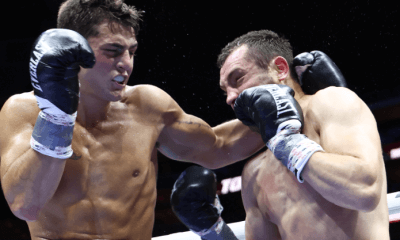
 Featured Articles3 weeks ago
Featured Articles3 weeks agoVito Mielnicki Jr Whitewashes Kamil Gardzielik Before the Home Folks in Newark
-
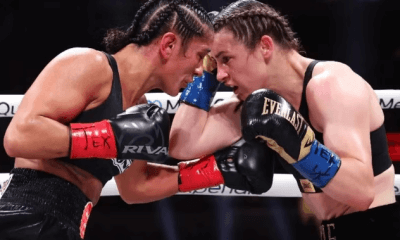
 Featured Articles12 hours ago
Featured Articles12 hours agoResults and Recaps from New York Where Taylor Edged Serrano Once Again
-

 Featured Articles4 weeks ago
Featured Articles4 weeks agoCatching Up with Clay Moyle Who Talks About His Massive Collection of Boxing Books
-
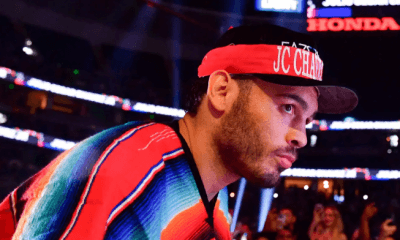
 Featured Articles5 days ago
Featured Articles5 days agoFrom a Sympathetic Figure to a Pariah: The Travails of Julio Cesar Chavez Jr
-
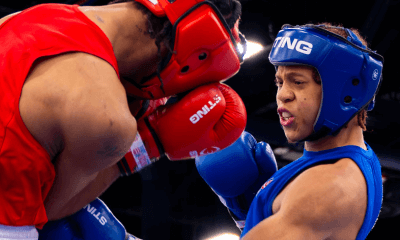
 Featured Articles3 weeks ago
Featured Articles3 weeks agoMore Medals for Hawaii’s Patricio Family at the USA Boxing Summer Festival
-
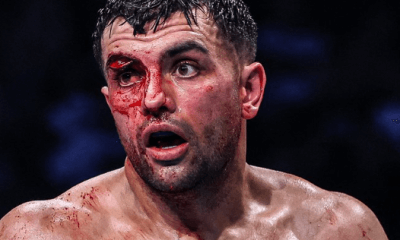
 Featured Articles7 days ago
Featured Articles7 days agoCatterall vs Eubank Ends Prematurely; Catterall Wins a Technical Decision
-
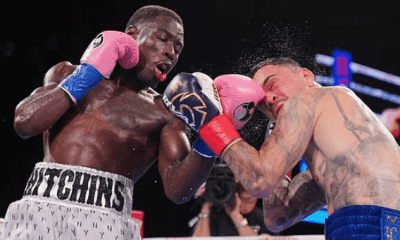
 Featured Articles4 weeks ago
Featured Articles4 weeks agoRichardson Hitchins Batters and Stops George Kambosos at Madison Square Garden

















